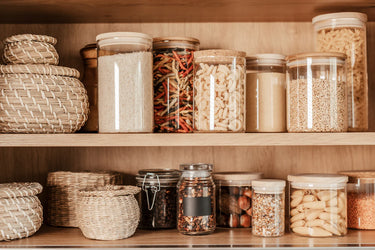When And Why You Should Use A Glass Lid For Cooking On The Stovetop

When it comes to cooking, more information is better. Knowing the temperature of cooked meats? Crucial. Detailed instructions for baking a cake? Essential. Next to thermometers and excellently written recipes, a glass lid for pans and saucepans might just be the best, most useful tool in the kitchen. That’s because with a glass lid, you get more information than with an opaque metal, cast iron, or ceramic lid, but still get the benefits of covering the dish.
Covering a skillet, saucepan, or pot while cooking helps maintain temperature control, which is important for even cooking. It helps bring liquid to a boil faster, too (which uses less energy, aka, it’s more cost efficient, too). Covering the pot keeps steam from escaping, too. When cooking homemade stock, for example, you trap those delicious aromas, rather than letting them escape through evaporation. A lid can also reduce cooking time by allowing foods to steam. With a glass lid, you get a window into what’s going on, which means there’s no mystery, hence no over or under cooking, and you won’t let all the precious moisture escape or mess with the temperature to get that information.
Most glass lids—including HexClad’s own glass lids—can be put in the dishwasher for easy clean up.
These dishes are the best for using a glass lid on the stovetop:
Making fried eggs with a runny yolk but no runny whites
If you want a fried egg that has no runny yolk, then the glass lid is your friend. After slipping the eggs into hot oil or butter, let them cook until the whites have set into shape and the yolk is still glossy. If you want the edges to get lacy, use more oil and a bit more heat. But what to do if you don’t want any runny yolk? Simply cover the pan with a glass lid and wait until the yolk has just turned slightly opaque. This ensures a runny yolk but no runny white, without having to go the inferior route of over easy.
A perfectly melty grilled cheese
Making a grilled cheese? It’s time to pull out the glass lid. Though it’s not an essential step, many grilled cheese connoisseurs swear by adding a lid to the pan, since the steam encourages the cheese to melt faster so the bread doesn’t burn. Use the same method when making an open-faced tuna melt, a decadent reuben sandwich, or any other bread-and-cheese situation you want to melt.
Cooking rice and other grains
If you’re a fan of the old-school absorption method of cooking rice (that’s when you combine rice and water, bring it to a boil, reduce to a simmer, and cover), then temperature control is super important. Too high of heat and the rice will stick. Too low and the rice will be undercooked and there will be liquid left over. With a glass lid on your saucepan, it’s easy to adjust the temperature to a bare simmer without letting precious steam escape. The result? Perfectly fluffy rice every time. A glass lid works just as well for other grains like barley, freekeh, and quinoa.
Steaming vegetables
Keeping the lid on when steaming vegetables is essential, but how can you tell they’re done through an opaque lid? Enter the glass lid, which allows you to keep an eye on color (a good sign of doneness). For example, if your green beans are bright and verdant, that means they’re probably ready. Anything past that in the dark, muddier greens, then you know you’ve gone too far. The same goes for steamed potatoes, carrots, bok choy, and more.
Anything you’re braising, poaching, or simmering
Rather than lift off the lid—which lets precious aromas escape and reduces the temperature—a glass lid allows you to adjust the heat level. This is essential for anything poached, braised, or simmered. Too high of a temperature and the liquid will boil, making the resulting food tough and overcooked. In the instance of a meat dish like braised short ribs, this means the meat will be chewy and tough, rather than fall-off-the bone tender.





